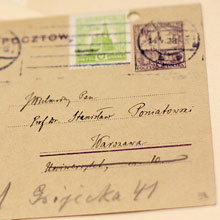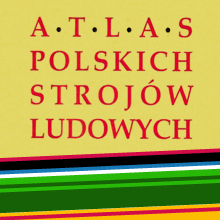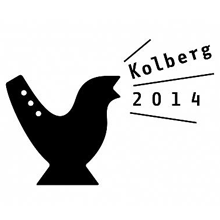STRESZCZENIA (Summary in english)
Aleksandra Rzepkowska
LISTENING TO THE RECOLLECTIONS OF SIBIRAKS. THE ANTHROPOLOGIST FACED WITH THE EXPERIENCE OF DEPORTATION
(Summary)
The articles describes verbal recollections of Sibiraks, people deported between 1940-1941 to different regions of the Soviet Union (mainly Siberia and Kazakhstan). All these recollections were gathered between 2002-2005 in the course of interviews with representatives of the deportees, who live in Łódź and nearby. The articles discusses the differences between verbal and written accounts of Sibiraks’ experiences and their value in ethnological and anthropological studies. The community dimension of the narratives as well as characteristic features of memory recorded in them have also been presented. It is described as an intermediate form between stricte autobiographic memory and „postmemory”. In conclusion the author hints at some interpretations, which could be used in future ethnological and anthropological exploration of the „Polish Siberia” and the Siberian experiences.
Key words:
deportation, USSR, Sibiraks, Second World War, discourse, community, autobiographic memory, „postmemory”
Ivan Peshkov
THE HOSTAGES OF THE „IMAGINED PAST”. PROBLEMS OF ETHNIC AND CULTURAL IDENTITY AMONG THE GURAN MINORITY IN EASTERN SIBERIA
(Summary)
The article aims to present the role of the „imagined past” in the development of the identity among the Guran community in Eastern Siberia. The group under analysis created a unique culture with strong Evenk and Buryat elements. The Gurans played a specific social role (Cossacks); they held the status of local Russians despite mixed origin. Their complex identity structure, with ethnic, racial, social and political elements, is very specific. The myth of the role played by the Guran ancestors in the conquest of Siberia formed the base of their identity. Russifi cation and westernisation of the past did not interfere with the existence of eastern elements in the culture of the Gurans. We are dealing with a community, which actively confi gures events of the past, in this way creating concepts, which integrate the group. The Gurans can offer such an account of the events, which incorporates their history into the general trend of Russian history (the conquest of Siberia, fi ght against communism), without eliminating elements of Buryat and Evenk cultures.
Key words:
Eastern Siberia, Baikalian Siberia, Gurans, Cossacks
Łukasz Łuczaj
TAXONOMIC ISSUES IN POLISH ETHNOBOTANICAL STUDIES
(Summary)
The aim of the article is to discuss possible problems faced by researchers studying the traditional use of plants in Poland. One of the main issues is the discrepancy between the folk taxonomy and Polish scientifi c names. It is often the case that a Polish scientific name assigned arbitrarily to a certain genus was actually extensively used by common people to name different genera. Sometimes the confusion is caused by the different meaning of certain folk names in different parts of Poland. The paper also discusses which Latin names should be given to folk generics that refer to one or a few botanical species (e.g. lipa — linden), whether they should be labelled with only the scientifi c generics (Tilia sp.) or with the most commonly used botanical species (Tilia cordata), or whether they should be given a more detailed description („mainly Tilia cordata and possibly T. platyphyllos”).
In this article botanical mistakes in Polish ethnographic studies are discussed and a list of the most confusing taxa is given. Besides, the author lists a few taxa often omitted or not properly recognised in ethnographic studies.
The author suggests some ways to improve the quality of ethnobotanical research. These are: the use of specimens, recording informant consensus, interviewing informants in the fi eld (in the plants’ habitat), and cross-checking the gathered material (herbarium specimens, plant photos and names) with a plant taxonomy specialist.
Key words:
ethnobotanics, folk taxonomy, plant names
Monika Kujawska
HEALING WITH CHARMS AMONG THE POLES IN MISIONES, ARGENTINA
(Summary)
This paper presents the ethnographic fi eld data analysis concerning faith healing among Polish immigrants and their descendants. The research was carried out among the inhabitants of two settlements, located in the proximity of the triple frontier of Argentina, Brazil and Paraguay in the province of Misiones, Argentina. The ailments described here are the so called „folk illnesses”: „evil eye”, empacho, rendidura and kamburu-yeré, of which only the fi rst one had been known to Polish immigrants from the native country.
They familiarised themselves with the other illnesses during the prolonged coexistence and the cultural exchange with other ethnic and national groups, mainly with the Paraguayan Mestizos. Among the informants, fourteen persons cure one or more folk illnesses with charms. Most of the informants, however, confi ne this activity to the household and only three persons dedicate themselves to the local community. This paper attempts to provide some explanations for this matter.
Key words:
complementary medicine, charm healing, Polish immigrants, Misiones, Argentina
Jacek Jan Pawlik
CONTINUITY AND CHANGE IN AFRICAN MOURNING RITUALS IN NORTHERN TOGO
(Summary)
Rituals connected with death belong to the most complex African ritual practices. They include rituals practised in the period from agony to the end of mourning. Their aim is to properly bury the body of the deceased, help the deceased person’s spirit enter the land of the ancestors and accompany the relatives during mourning. The practices change with technical progress, education and impact of monotheistic religions. The article presents the changing form of rituals connected with death in northern Togo. The author fi rst describes the traditional model, which comprises two periods abounding in rituals: — that directly after death — the burial ritual, and that, which takes place two years after death — the mourning completion ritual. Subsequently, he analyses the changes that have started when people began to migrate, had better access to new body preservation techniques and when funeral services were commercialised. In the end, the author describes the impact of education and religion on the changing way of thinking, which induced the change of practices aimed at discovering the cause of death, softened the attitude to „bad” death and expanded funeral rituals so that now they apply to all the dead.
Key words:
funeral rituals, northern Togo, cultural change, impact of Christianity, technical progress
Agnieszka Szczepaniuk
MODERN TRANSFORMATIONS OF TRADITIONAL AUTHORITY AMONG THE ASHANTI IN CENTRAL GHANA
(Summary)
The article shows the recent changes in the institution of African chieftaincy. In the pre-colonial era and also during the colonial period, the traditional ruler was perceived as divine as he was supposed to be an earthly representative of gods and dead ancestors. This special bond with the ancestors gave him the right to run the ritual practices on which the wealth of his people depended. But recently in Ghana more and more white tourists are installed as chiefs in traditional societies. This change is caused by the new role of the chiefs and new expectations of the people. The data gathered during the author’s fi eldwork in Ghana shows that nowadays the chiefs act as the agents of development in the rural areas. Contemporary chiefs are the well-educated professionals using theirs skills in combating poverty, diseases and illiteracy. While pre-colonial chiefs were the guards of the tradition and the order established by the ancestors, contemporary chiefs in Ghana are the agents of development, the builders of the new, modern and democratic order.
Key words:
chieftaincy, king’s rule, traditional rule, desacralisation of authority, Ashanti, Ghana
Anna Szyfer
TERRITORIAL COMMUNITIES AS „SOCIAL WORLDS” UNDER CONDITIONS OF MULTICULTURALITY
(Summary)
The author discusses the problem of multiculturality of the rural communities in Podlasie in northeastern Poland. The region is inhabited by a population of different ethnic origin (Poles, Byelorussians), language (Polish, Byelorussian and local dialect), religion (Catholics, Orthodox) and social (peasants, descendants of small gentry). In the analysis she uses Anselm Strauss’ concept of „social worlds”; in the research itself she adopted Fritz Schütze’s autobiographic narrative method. The discussion of the „social worlds” (and cultural worlds at the same time) is illustrated with empirical material collected in three villages – Soce (a village mostly inhabited by Orthodox Byelorussians), Olczewo (a village inhabited by Polish small gentry) and Pulsze (a Polish, Catholic village, inhabited by peasants and small gentry). The study led to the conclusion that the processes of accommodation and integration are faster in communities characterised by a similar social status, often irrespective of ethnic and religious differences. On the contrary, in communities with apparent social differences, the old divisions have remained, although they are not so strong as in the past.
Key words:
rural territorial communities, „social worlds”, multiculturality, autobiographic narrative, rural traditional culture, Podlasie region
Tomasz Kosiek
ABOUT WORK AND CELEBRATIONS IN THE FORMER KOLKHOZ VILLAGE IN UKRAINIAN CARPATHIANS
(Summary)
The author tries, to some extent, to fi ll up the gap in the research on the impact of socio-economic transformations in Ukraine on rural communities. The article discusses selected aspects of everyday life of the inhabitants of a small village in the Eastern Bieszczady Mountains. The discussion is based on fi eldwork conducted by the author in 2007.
The everyday life in a former kolkhoz village is focused on work, mainly backward farming and breeding. Because the profi ts are low, social pathologies develop, among them mainly alcoholism. Only a small group of people are better off; they knew, at the right time, how to cope at the times of transformations. The „social diseases” affect even those, who, like the village leader or priest, should serve as an example for the local community.
Celebrations, partly religious but predominantly lay ones, introduce some change to the dullness of everyday life. Celebrations create an opportunity to meet with the relatives and neighbours. However, they are always accompanied by alcohol. Work and free time alike are good occasions to drink. Drinking is like an everyday ritual, treated as a kind of „catalyst”, affecting social relations and making life in the changing reality easier.
Key words:
everyday life, work, celebration, kolkhoz, Ukraine, Eastern Carpathians, Boiko country (Boikivshchina)
Łukasz M. Bochenek



